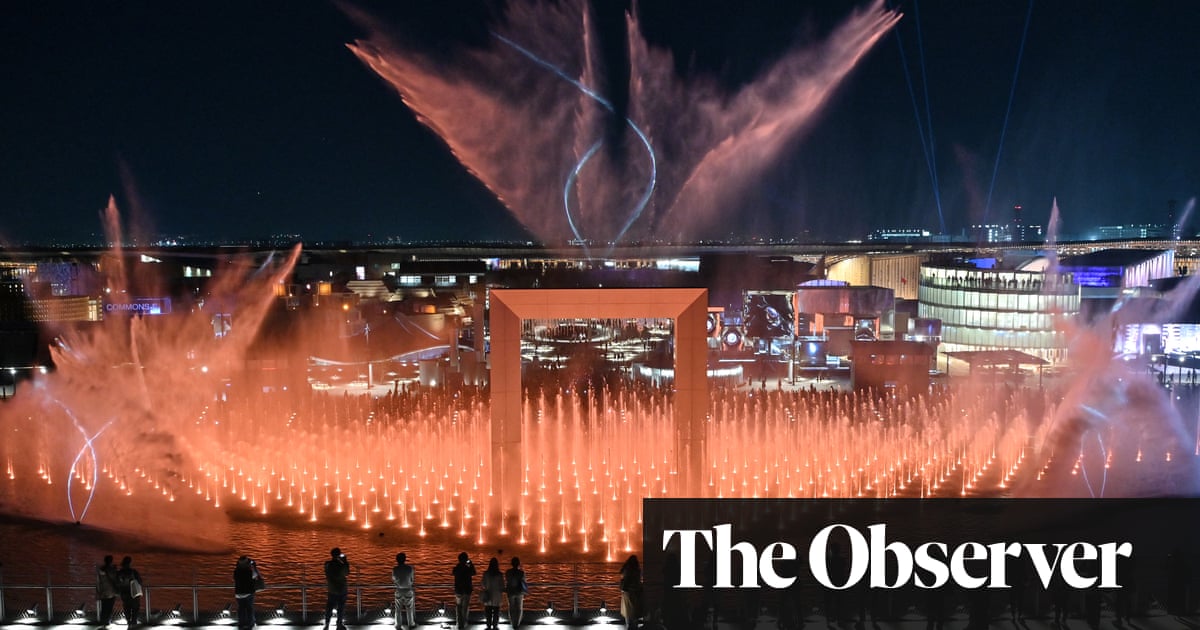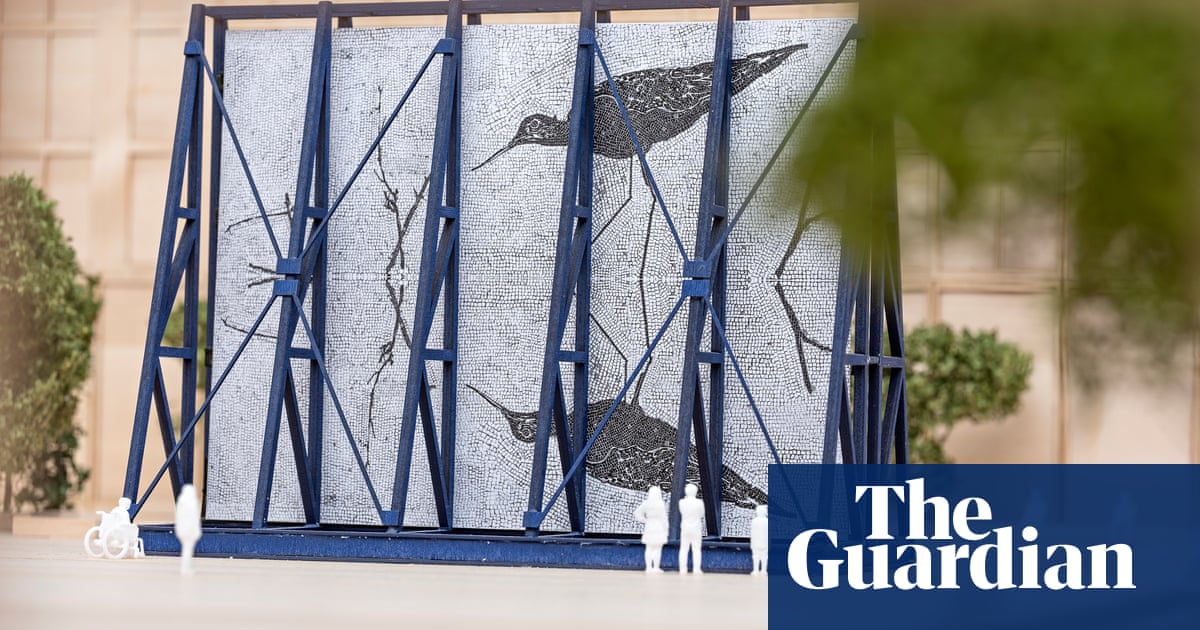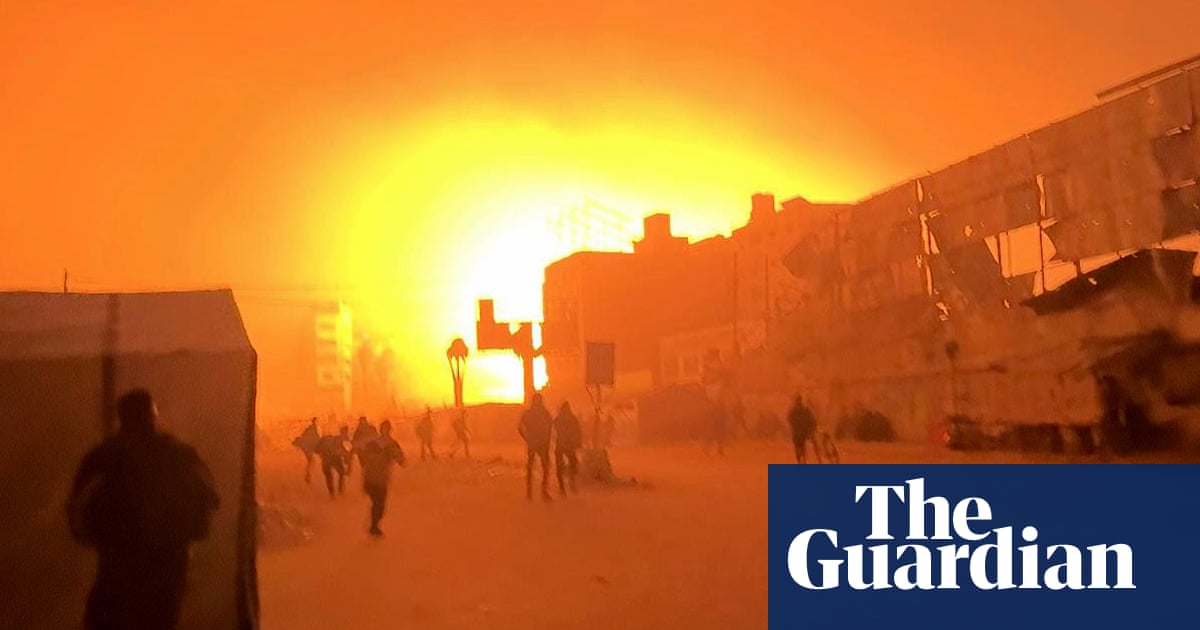As clunky as it sounds, “designing a future society for our lives” isn’t a bad ambition for the world in these troubled times. From this Sunday, organisers of the 2025 Exposition in Osaka will be hoping that appeal will put the event’s unsettled preparations in the shade for a six-month celebration of our common humanity.
The western Japan city is preparing to host its second World Expo, 55 years after the first was held in a country eager to capitalise on fading memories of the second world war as it embarked on its postwar journey to become an industrial and technological powerhouse.
Then, 64 million people descended on Osaka’s northern suburbs to view the Tower of the Sun – still a popular site in the commemorative park – and a moon rock retrieved by Apollo 12.
The 2025 version opens under a geopolitical cloud dark enough to cast a shadow over the 960-acre grounds on the reclaimed Yumeshima (“Dream Island”), a former dumping ground for industrial waste and, for successive Osaka governments, a plot of land in perennial need of a purpose.
The expo is the most convincing attempt yet to make use of the unloved island, until now a blot on the landscape, with Osaka’s industrial skyline on one side and the busy shipping lanes of the Seto inland sea on the other. In its mission to bring people together, 150 countries and regions will showcase the best of their culture and technology, albeit with an acknowledgment that humanity is more divided than at any time most of the millions of expected visitors can recall.
They should, though, marvel at a Martian meteorite discovered by Japanese scientists in Antarctica in 2000, interact with androids that could one day live in their homes, view a beating artificial heart made of stem cells and – not for the faint-hearted – stare back at an image of what they might look like in 25 years’ time.
Viewed from the grand ring – a 2km (1.24 mile) wooden promenade that encircles the waterfront site – there is an incongruity to the 150 pavilions, from the flamboyance of Turkmenistan to the neat wooden contours of Japan. And all separated by lots of Tarmac and concrete. The earthquake-resistant wooden “skywalk”, though, is a feat of craftsmanship, built with a traditional joinery method used in the construction of ancient shrines and temples, its network of cypress, cedar and pine beams destined to become a shady oasis when Japan unleashes its brutal summer heat midway through the event.
The expo theme’s tagline – “towards a brighter future for all” – feels laughably elusive, but credit should go to the organisers for addressing the harsh realities of the world outside.
The blue and yellow sign over Ukraine’s booth states that the country is “not for sale”, echoing comments from the country’s president, Volodymyr Zelenskyy. Russia has chosen not to take part.
In August visitors will be able to take part in a virtual reality experience corner for conflict zones in Gaza, in a space currently devoted to 80 years of the United Nations and its constituent departments and agencies, including Unrwa.
Palestine’s space is to be found in the far corner of a shared pavilion, although its organisers claim the shipment of several planned exhibits has been delayed by Israeli authorities, which is denied by Israel, whose pavilion includes a stone from the Western Wall in Jerusalem.
The reported delay is in keeping with Osaka’s bumpy road to Expo 2025. Construction was hit by labour shortages and the soaring cost of building materials – the project’s initial price tag of ¥125bn has soared to ¥235bn (from £666m to £1.25bn) – while interest among the Japanese public has so far been lukewarm.
The 1970 Osaka Expo’s 64 million visitors was a record until Shanghai in 2010. So far, only 8.7m advance tickets have been sold for 2025, well below the pre-sales target of 14m.
Last week, as TV crews swarmed around the site, workers were still flattening strips of tactile paving for visitors with visual impairments, while activity around incomplete pavilions gave them the feel of a supermarket entrance. The 1,500 trees comprising the Forest of Tranquillity will need time to bed in.
Organisers have been given last-minute jitters by the discovery of potentially explosive concentrations of methane gas, as well as concern about overcrowding at the new subway station serving the site and, on social media, disbelief at the lack of cubicle walls in the children’s lavatories.
The host nation, though, has deployed its soft power to good effect: the world’s longest conveyor belt sushi, a giant Gundam robot, 32 sculptures of Hello Kitty dressed as different types of algae to symbolise the plant’s versatility, and an upgraded version of a “human washing machine” that proved a hit at the 1970 event.
In a country addicted to yuru-kyara [mascot characters], the biggest attraction could turn out to be Myaku-Myaku, a red and blue figure with five googly eyes that was ridiculed when it was selected as the expo’s official mascot. Since then, the mysterious creature, purportedly “born from the fusion of cells and water”, has won over the Japanese public and is now the centre of a large merchandise empire … and the face of manhole covers across Osaka.
Sou Fujimoto, the exposition’s architectural mastermind, conceded the event was opening at a time when minds are focused on wars, real and commercial. “The whole global situation is very unstable,” he told CNN. But he added: “I believe this is a really precious opportunity to show so many countries can come together in one place and think about our future together.”
That lofty vision will be fleeting, however. The pavilions – and Fujimoto’s “sustainable” edifice – will be dismantled later this year to make way for Japan’s first casino. But as gambles go, the longer odds could be on selling the idea that the expo movement’s bricks-and-mortar appeal for global unity will strike a chord in a hyper-connected, but fractured, world.










